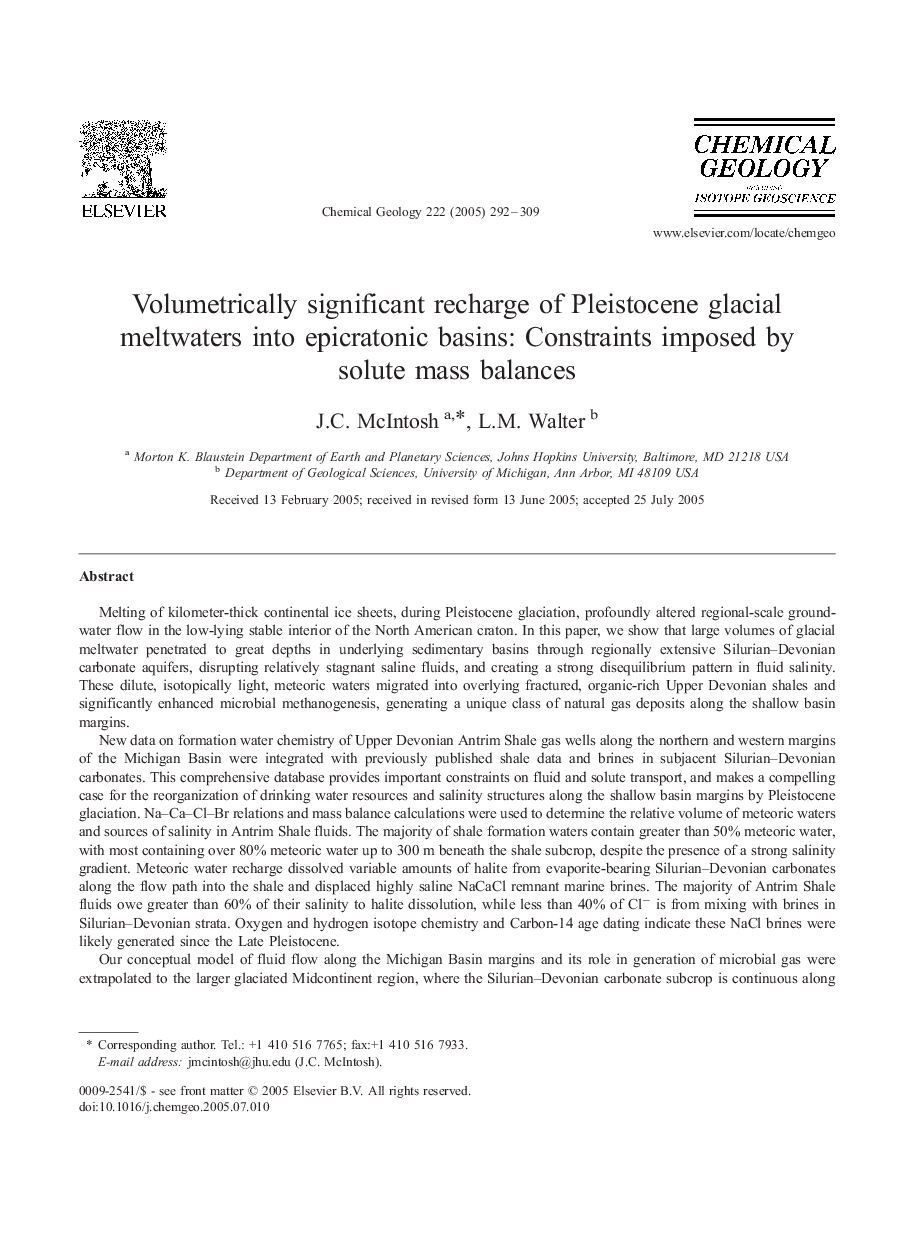| Article ID | Journal | Published Year | Pages | File Type |
|---|---|---|---|---|
| 9529034 | Chemical Geology | 2005 | 18 Pages |
Abstract
Our conceptual model of fluid flow along the Michigan Basin margins and its role in generation of microbial gas were extrapolated to the larger glaciated Midcontinent region, where the Silurian-Devonian carbonate subcrop is continuous along the Illinois, Michigan, and Appalachian basin margins, and is overlain by Upper Devonian black shales. Major differences in the hydrostratigraphy and fluid salinity of the epicratonic basins controlled the extent of meteoric water invasion and generation of microbial methane. Increased hydraulic gradients from melting of the continental ice sheets greatly enhanced recharge of dilute waters into deep Silurian-Devonian aquifers and overlying fractured shales, reversing regional-scale groundwater flow and altering the major ion composition. These fluid migration events occurred over relatively short time scales (thousands of years), compared to well-documented basinal-scale fluid migration events driven by tectonics and sediment compaction (over millions of years). Understanding the hydrogeochemistry of the saline-meteoric water mixing zones and the sources of salinity in sedimentary basins are both important for constraining fluid and solute transport, chemical evolution of basinal fluids, and physical stability of brines during meteoric water invasion.
Related Topics
Physical Sciences and Engineering
Earth and Planetary Sciences
Geochemistry and Petrology
Authors
J.C. McIntosh, L.M. Walter,
